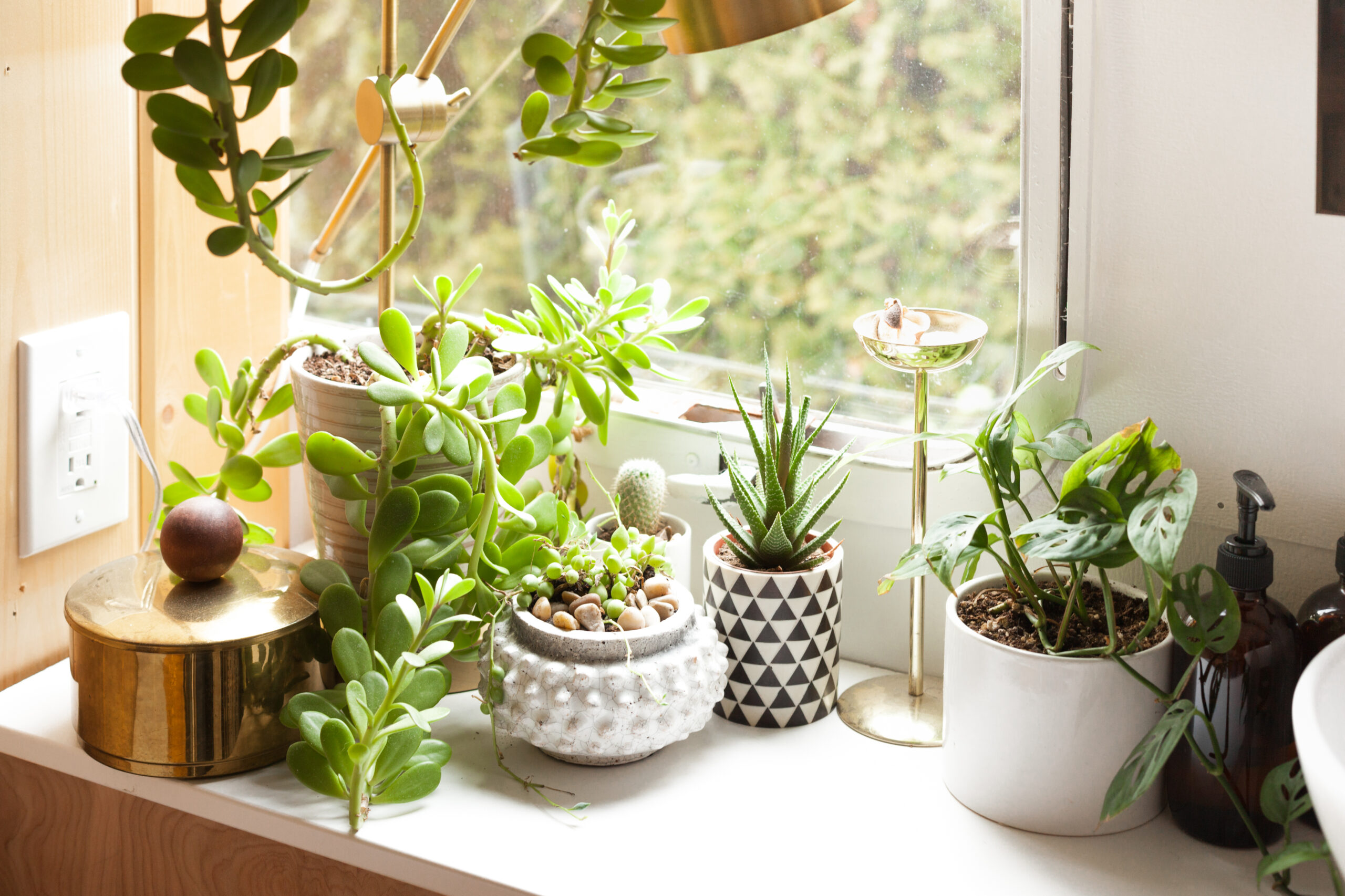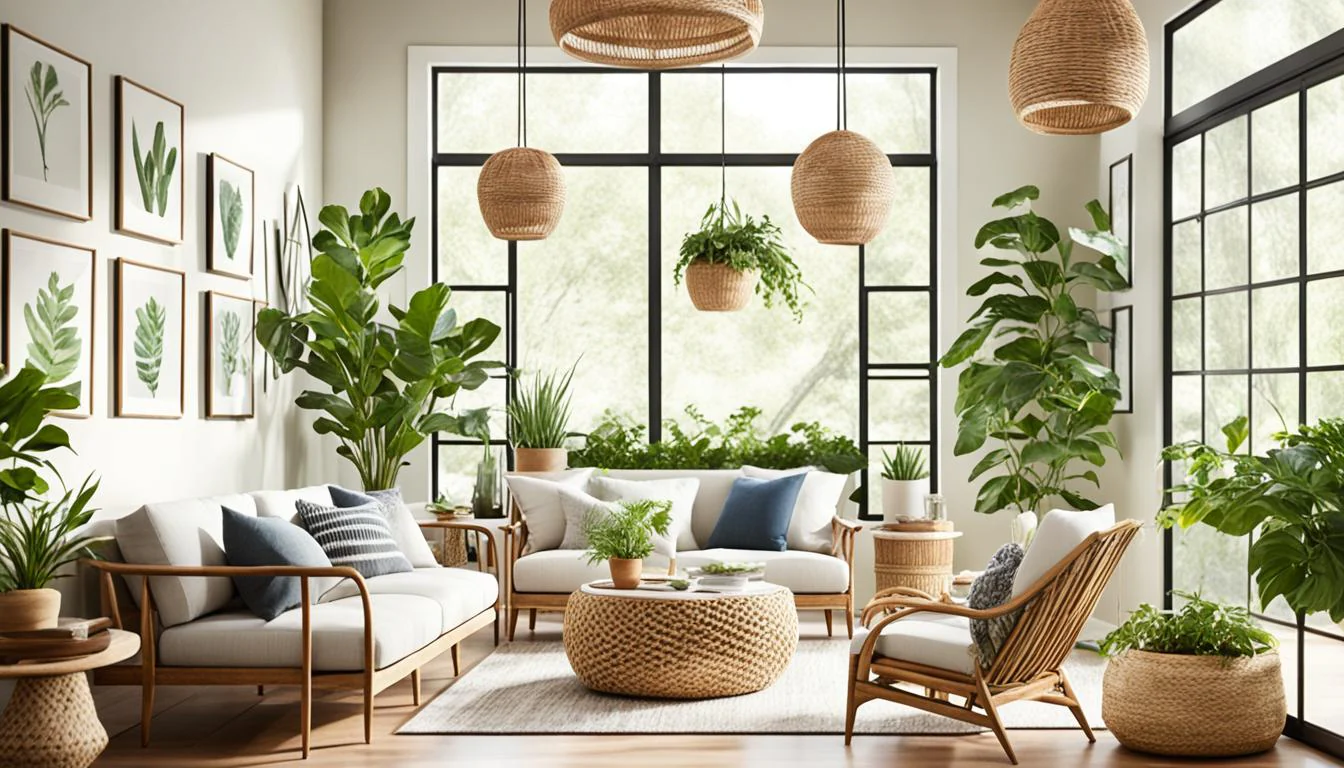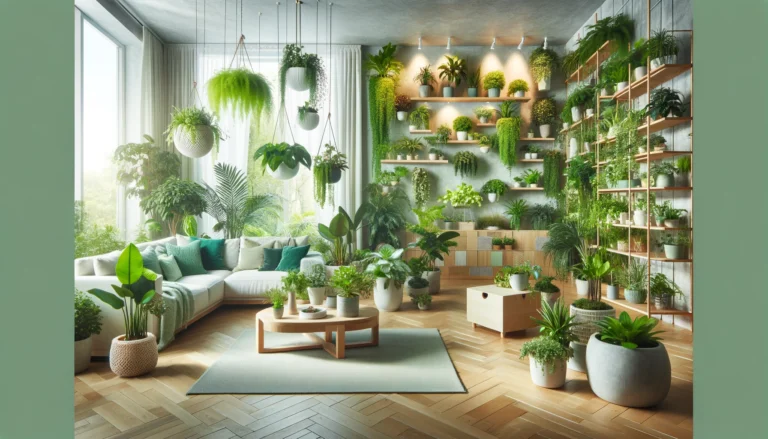Contents
Introduction
Are you dreaming of turning your small apartment living room into a lush, green oasis but feeling a bit overwhelmed by the idea? You’re not alone! Creating a green space in a tiny area might seem like a big challenge, but it’s actually more manageable than you might think. Adding indoor plants not only brightens up your space but also improves air quality, boosts your mood, and makes your home feel more alive and welcoming.
First off, why should you even consider adding plants to your living room? Well, plants are like natural air purifiers. They help filter out toxins, making the air you breathe fresher and cleaner. Plus, they add a splash of color and vibrancy to your space, which can be a real mood booster. Imagine coming home to a cozy living room filled with greenery—it’s like having your own little piece of nature right at home!
Now, you might be wondering about the challenges of fitting plants into a small living room. Limited space and light can make it tricky, but don’t worry. With a bit of creativity, you can turn even the smallest of areas into a green retreat. From choosing the right types of plants to figuring out the best spots to place them, we’ll cover everything you need to know to create your perfect indoor garden. So, let’s dive in and start turning your living room into a green paradise!
Choosing the Right Plants
So, you’re ready to bring some greenery into your living room, but where do you start? The key to a thriving indoor garden in a small apartment is picking the right plants. Not all plants are created equal, and some are way better suited for cozy indoor spaces than others. Here’s how to choose plants that will thrive in your living room and fit seamlessly into your small space.

Low-Light Plants If your living room doesn’t get a ton of natural light, don’t worry—there are plenty of plants that are perfectly happy in lower light conditions. Take the Snake Plant, for example. It’s a tough cookie that doesn’t need much light to stay healthy. Plus, it has sleek, modern leaves that look great in any decor. Another excellent choice is the ZZ Plant. It’s super low-maintenance and can handle those less-than-ideal lighting conditions without breaking a sweat.
Compact Plants When space is tight, you want plants that don’t take up too much room but still make a big impact. Enter the Pothos. This plant is a champ at trailing down from shelves or hanging planters, adding a touch of green without crowding your space. The Spider Plant is another winner. It has cute, arching leaves and small plantlets that make it a charming addition to any small spot.
Air Purifying Plants If you’re looking for plants that do more than just look pretty, consider ones that help clean the air. The Peace Lily is a fantastic choice; it’s known for its ability to remove toxins from the air while adding a touch of elegance with its white blooms. English Ivy is another great option—it’s not only a purifying powerhouse but also easy to manage and looks lovely in hanging planters or on shelves.
Choosing the right plants is all about finding the ones that will thrive in your specific conditions and complement your space. With these tips, you’ll be well on your way to creating a vibrant and healthy green oasis in your living room.
Creative Plant Placement
Now that you’ve picked out your plants, it’s time to think about where to put them. In a small apartment, making the most of your space is crucial, and the right placement can turn your living room into a mini jungle without feeling cluttered. Here are some clever ideas for displaying your plants in a small space.

Vertical Space When floor space is at a premium, look up! Using vertical space is a game changer. Wall-mounted planters are perfect for adding greenery without taking up any floor space. They come in various styles and sizes, so you can create a vertical garden that fits your taste and space. Hanging plants are another great option. With macramé hangers or plant brackets, you can keep your plants off surfaces and add a bit of flair to your decor.
Shelving Units Shelves are your best friend when it comes to maximizing plant space. Tiered plant stands let you display multiple plants at different heights, making it easy to show off your collection without needing extra floor space. Floating shelves are another stylish solution. They’re mounted on the wall and can hold several plants, adding a touch of greenery at eye level.
Windowsills and Ledges If you have windowsills or ledges, take advantage of them! Plants that love sunlight can be placed here, soaking up all that natural light. It’s a great way to give your sun-loving plants the brightness they crave while keeping them out of the way. Plus, it adds a refreshing touch to your window area.
Getting creative with plant placement not only helps you make the most of your space but also turns your living room into a beautiful, green haven. By using vertical space, shelves, and windowsills, you can create a lush, inviting atmosphere without feeling cramped.
Maximizing Natural Light
One of the secrets to keeping your indoor plants happy and healthy in a small apartment is making the most of the natural light you have. Plants need light to grow, so here’s how to ensure they get the best light possible without overwhelming your space.

Reflective Surfaces If your living room doesn’t get a ton of natural light, you can trick it into feeling brighter. Mirrors are a fantastic tool for this. By placing a mirror across from a window, you can reflect light around the room, making it feel brighter and helping your plants get more light. Another easy way to boost light is by using light-colored walls. White or light-colored paint reflects light better than dark colors, which can help your plants soak up more sunshine.
Artificial Lighting When natural light isn’t enough, don’t fret—artificial lighting can step in to help. Grow lights are a great investment if you want to give your plants a little extra light. They come in various types, from simple bulbs to more advanced systems, and can make a huge difference for plants that need more light. LED light strips are another handy option. They’re easy to install and can be placed around your living room to provide a gentle, consistent light source for your plants.
Making the most of natural and artificial light is key to keeping your plants thriving in a small apartment. By using mirrors, light-colored walls, and additional lighting options, you can create a brighter environment that helps your indoor garden flourish.
Plant Care Tips
Once you’ve got your plants set up and placed perfectly, keeping them healthy is the next big step. Proper care will ensure your green oasis stays lush and vibrant. Here’s a straightforward guide to taking care of your indoor plants, even if you’re a beginner.
Watering Figuring out how often to water your plants can be tricky, but it’s crucial for their health. Different plants have different water needs, so it’s important to get to know your specific types. A good rule of thumb is to check the soil regularly. If it feels dry a couple of inches down, it’s time to water. On the flip side, be careful not to overwater. Too much water can lead to root rot, so make sure the pots have drainage holes and only water when needed.
Fertilizing Plants need nutrients to grow strong and healthy, and that’s where fertilizing comes in. There are various types of fertilizers, but for most indoor plants, a balanced, all-purpose plant food works great. How often you should fertilize depends on the plant, but a general guideline is to feed your plants every 4-6 weeks during their growing season (usually spring and summer). Follow the instructions on the fertilizer package to avoid giving too much.
Pruning and Maintenance Regular maintenance keeps your plants looking their best. Start by removing any dead or yellowing leaves. This not only keeps your plants tidy but also prevents diseases. Pruning can also help encourage new growth. When it comes to repotting, if you notice your plant has outgrown its pot or the roots are coming out of the drainage holes, it’s time for a new pot. Repotting gives your plant more space to grow and helps refresh the soil.
With these simple care tips, you’ll be able to keep your indoor plants thriving and ensure your living room remains a beautiful green space. Regular watering, proper fertilizing, and occasional pruning will go a long way in maintaining a lush and healthy indoor garden.
Adding Accessories
Enhancing your green oasis isn’t just about choosing the right plants; it’s also about how you display them. The right accessories can add a touch of style and personality to your indoor garden. Here’s how to choose and use accessories to make your plant setup pop.
Decorative Pots and Planters The pots and planters you use can really make a difference in how your plants look and feel in your space. When choosing pots, consider ones that complement your living room’s decor. You can go for sleek, modern pots if you like a minimal look, or opt for colorful, patterned ones for a fun, vibrant touch. Don’t forget about size—make sure the pots are big enough for your plants to grow, but not so big that they overwhelm your space. Adding some decorative potting ideas, like using unique containers or DIY pots, can also make your plant display stand out.
Plant Stands and Holders Plant stands and holders can turn your plants into eye-catching features. Stylish plant stands come in various designs, from mid-century modern to rustic, and can elevate your plants to eye level, making them more noticeable and adding visual interest. Plant holders are another great option. They come in all sorts of styles, including hanging baskets and geometric stands, and can help you get creative with how you display your greenery.
Accessorizing with the right pots, planters, and stands can take your indoor garden from ordinary to extraordinary. By choosing items that reflect your style and complement your living room, you’ll create a green oasis that’s not only beautiful but also uniquely yours.
Creating a Plant Care Routine
Keeping your indoor plants happy and healthy is all about consistency. Setting up a plant care routine helps ensure your green oasis thrives without turning into a chore. Here’s a simple guide to help you establish a routine and keep track of your plant care needs.
Establishing a Schedule Creating a regular schedule for plant care makes things easier. Start by setting aside a specific day each week to check on your plants. During this time, you can water them, check for any signs of pests or diseases, and do a quick tidy-up. Additionally, you might want to schedule monthly or quarterly tasks, like fertilizing or repotting, based on your plants’ needs. Having a routine helps you stay on top of plant care without feeling overwhelmed.
Keeping Track To keep everything organized, consider using plant care apps or a simple journal. Plant care apps are handy tools that can remind you when to water, fertilize, or repot your plants. They often come with helpful tips and guides tailored to different plant types. If you prefer a more personal touch, a journal where you jot down your plant care schedule and observations can also be effective. Either way, keeping track of your plant care tasks will help you stay on top of things and ensure your plants are thriving.
By establishing a regular plant care routine and using tools to keep track, you’ll make maintaining your indoor garden a breeze. Consistency is key to a flourishing green space, so set up your schedule and enjoy the process of nurturing your plant paradise.
Conclusion
Congratulations! You’re now equipped with all the tips and tricks to transform your small apartment living room into a lush, green oasis. Let’s quickly recap the essentials to ensure your indoor garden stays vibrant and thriving.
First, choosing the right plants is crucial. Opt for low-light varieties if your space doesn’t get much natural sunlight, and pick compact plants if floor space is limited. Air-purifying plants are also a great choice to keep your indoor air fresh and clean.
Next, get creative with plant placement. Utilize vertical space with wall-mounted planters and hanging pots, and make the most of shelves and windowsills to display your greenery without taking up too much room. Reflective surfaces like mirrors and light-colored walls can help brighten up your space, while artificial lighting options like grow lights and LED strips can provide extra light for plants that need it.
Don’t forget about regular plant care. Establish a watering and fertilizing routine, and keep up with pruning and repotting to keep your plants healthy and happy. Adding stylish pots, planters, and stands can enhance your plant display, making your living room not only greener but also more visually appealing.
Finally, create a plant care routine that works for you. Set up a schedule for checking on your plants and use tools like plant care apps or a simple journal to keep track of their needs. With a bit of consistency and care, you’ll enjoy a thriving indoor garden that brightens your home and lifts your spirits.
So go ahead and start turning your living room into a green paradise. With these tips, you’re well on your way to creating a beautiful, cozy, and refreshing green oasis right in your small apartment.



